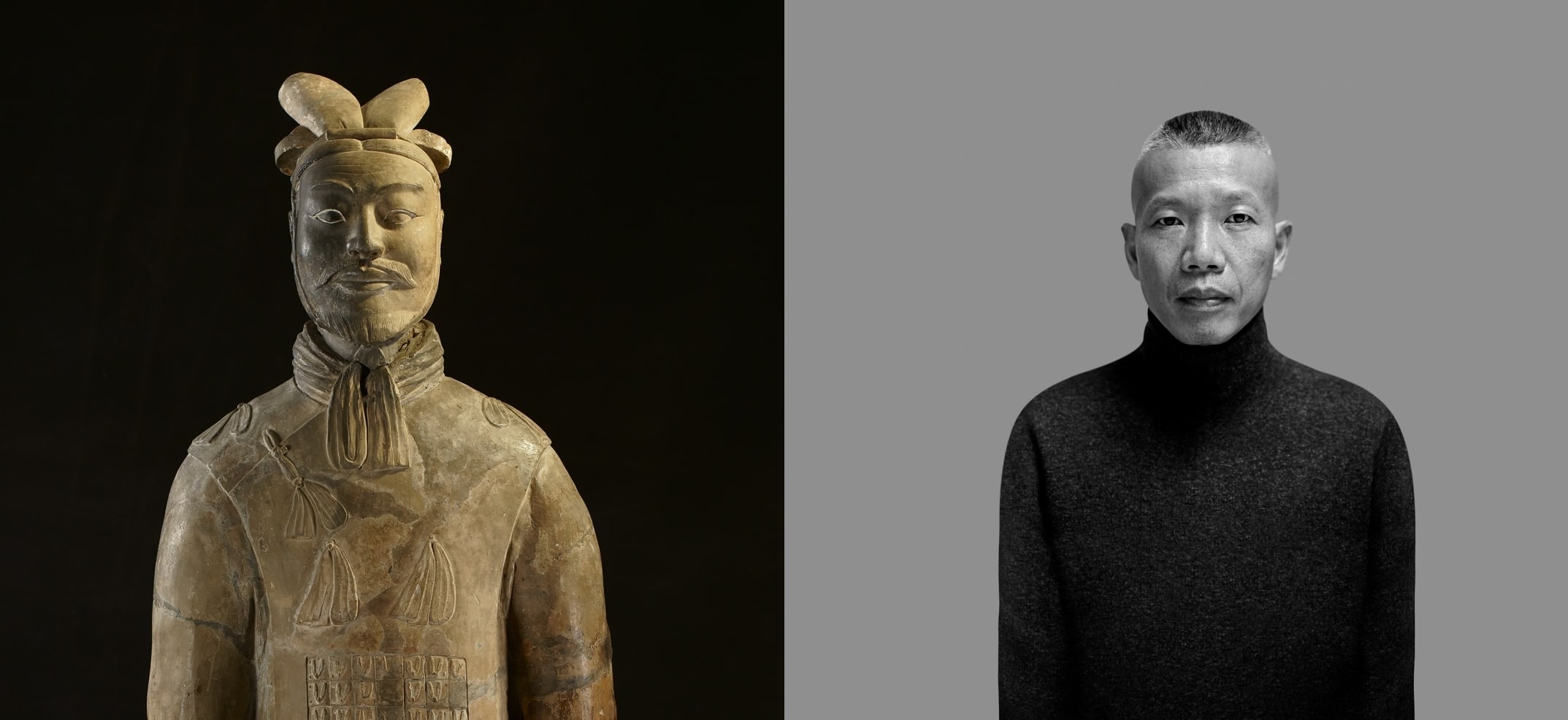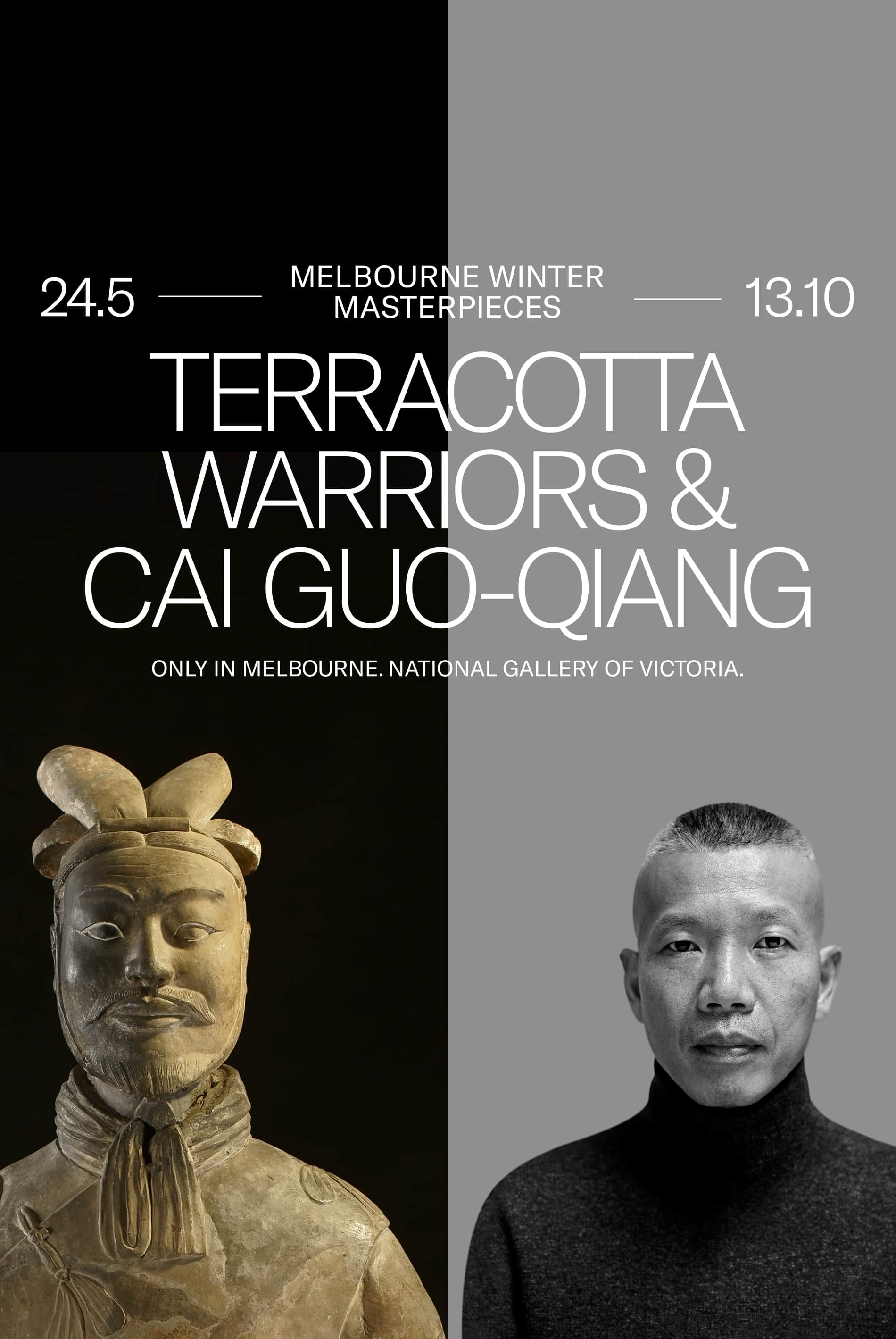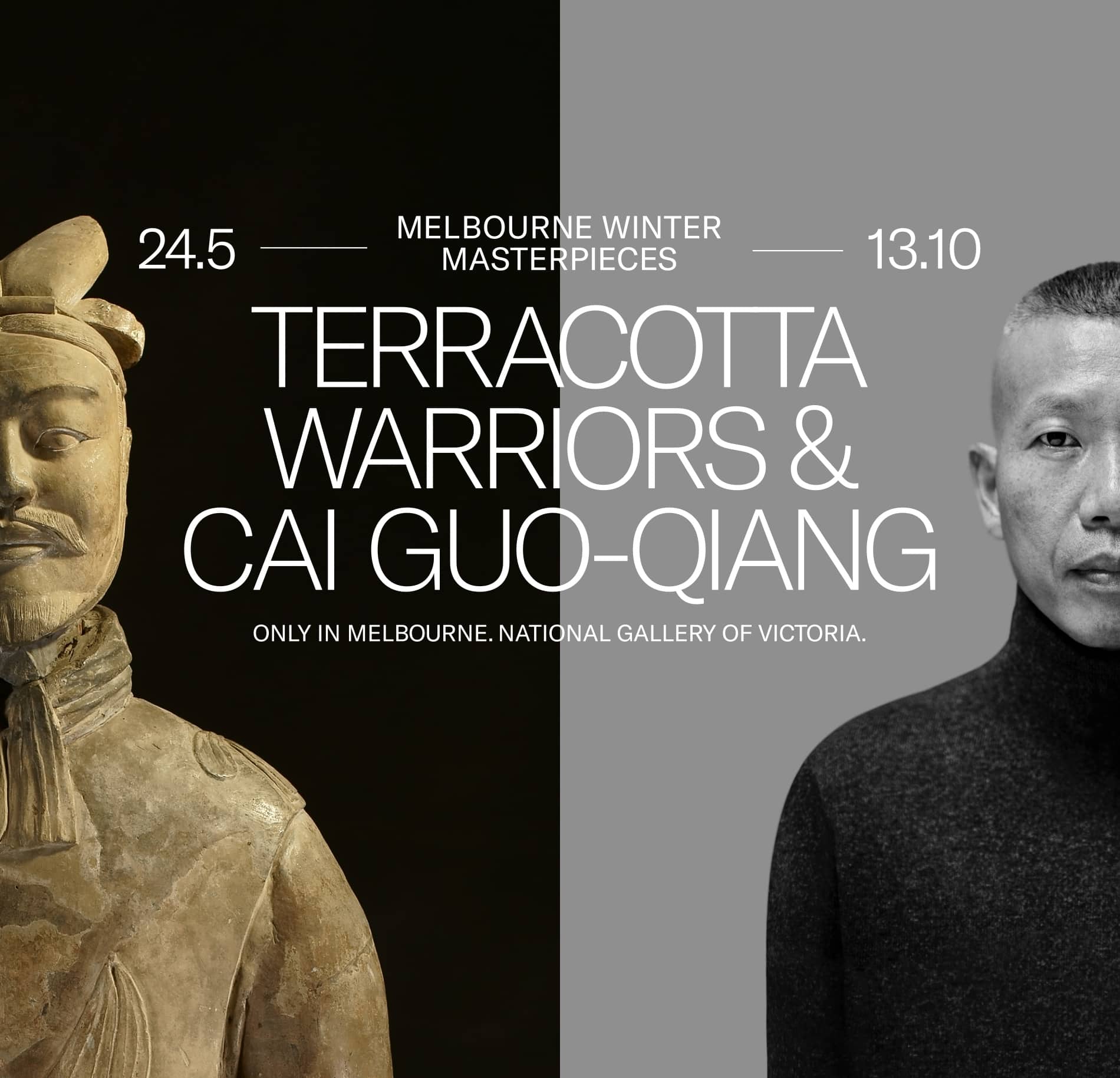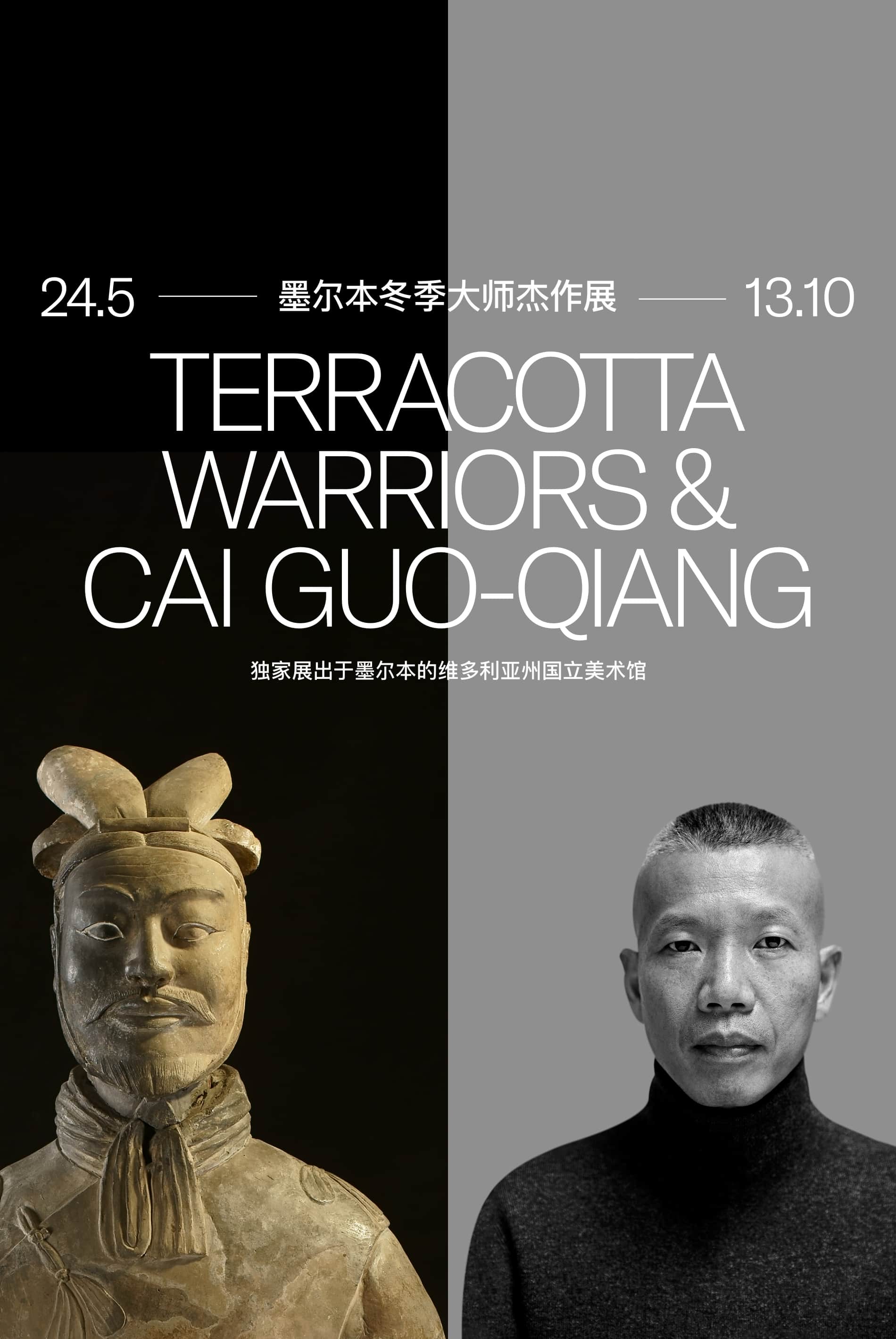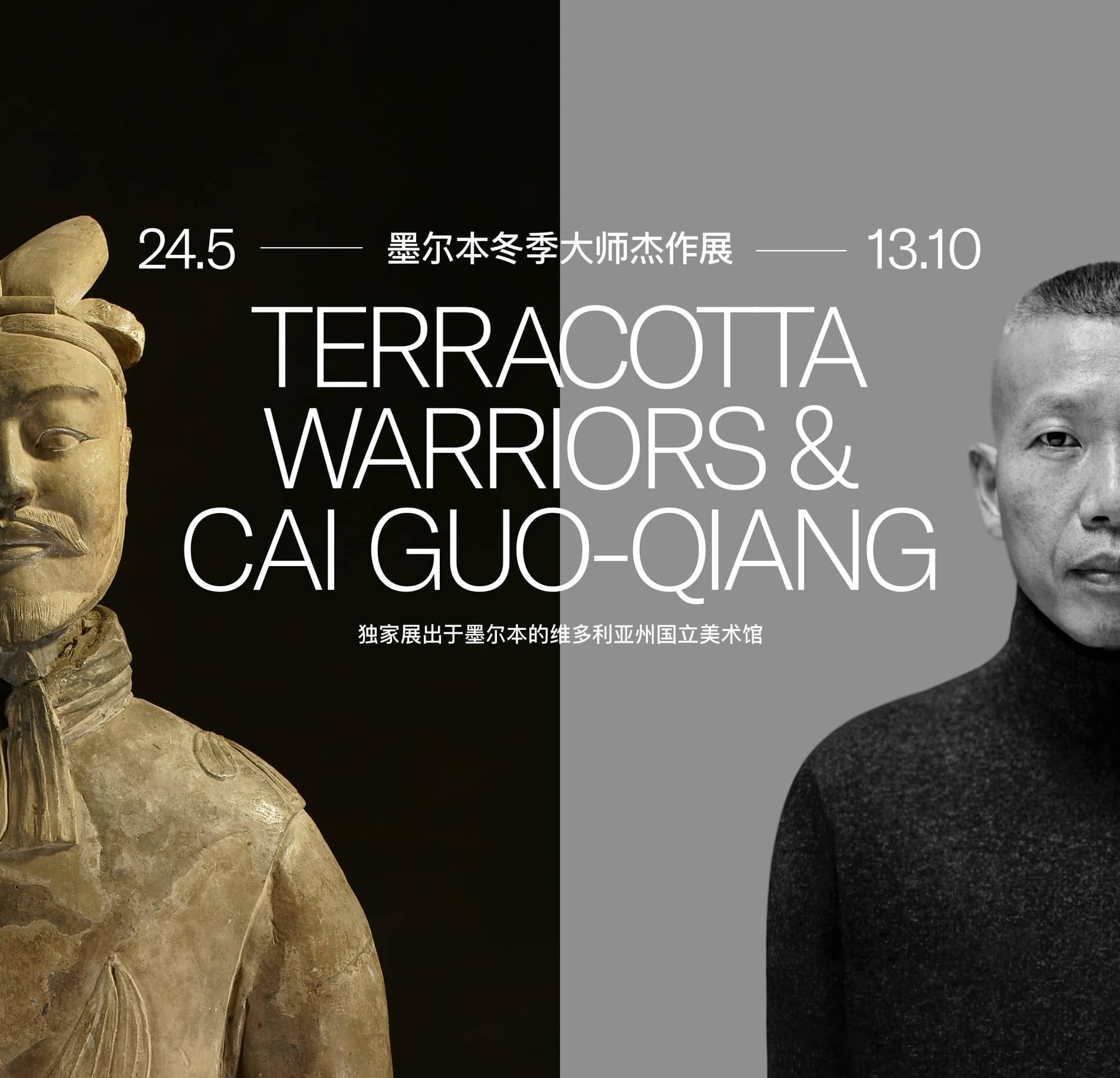CHINESE
Kneeling archer
跪射俑
Qin Dynasty 221–207 BCE
earthenware
120.0 cm
Excavated from Pit 2, Qin Shihuang’s mausoleum site, Lintong District, Xi’an, 1999
Emperor Qin Shihuang’s Mausoleum Site Museum, Xi'an (002812)
CHINESE
Armoured general
铠甲将军俑
Qin Dynasty 221–207 BCE
earthenware
196.0 cm
Excavated from Pit 1, Qin Shihuang’s mausoleum site, Lintong District, Xi’an, 1977
Emperor Qin Shihuang’s Mausoleum Site Museum, Xi'an (002524)
CHINESE
Armoured general
铠甲将军俑
Qin Dynasty 221–207 BCE
earthenware
196.0 cm
Excavated from Pit 1, Qin Shihuang’s mausoleum site, Lintong District, Xi’an, 1977
Emperor Qin Shihuang’s Mausoleum Site Museum, Xi'an (002524)
CHINESE
Armoured military officer
中级铠甲军吏俑
Qin Dynasty 221–207 BCE
earthenware
190.0 x 56.0 x 58.0 cm
Excavated from Pit 1, Qin Shihuang’s mausoleum site, Lintong District, Xi’an, 1976
Emperor Qin Shihuang’s Mausoleum Site Museum, Xi'an (002526)
CHINESE
Armoured military officer
中级铠甲军吏俑
Qin Dynasty 221–207 BCE
earthenware
190.0 x 56.0 x 58.0 cm
Excavated from Pit 1, Qin Shihuang’s mausoleum site, Lintong District, Xi’an, 1976
Emperor Qin Shihuang’s Mausoleum Site Museum, Xi'an (002526)
CHINESE
Unarmoured infantryman
战袍武士俑
Qin Dynasty 221–207 BCE
earthenware
189.0 cm
Excavated from Pit 2, Qin Shihuang’s mausoleum site, Lintong District, Xi’an, 1977
Emperor Qin Shihuang’s Mausoleum Site Museum, Xi'an (002759)
CHINESE
Unarmoured infantryman
战袍武士俑
Qin Dynasty 221–207 BCE
earthenware
189.0 cm
Excavated from Pit 2, Qin Shihuang’s mausoleum site, Lintong District, Xi’an, 1977
Emperor Qin Shihuang’s Mausoleum Site Museum, Xi'an (002759)
CHINESE
Standing Archer
立射俑
Qin Dynasty 221–207 BCE
earthenware
188.0 cm
Excavated from Pit 2, Qin Shihuang’s mausoleum site, Lintong District, Xi’an, 1978
Emperor Qin Shihuang’s Mausoleum Site Museum, Xi'an (002816)
CHINESE
Standing Archer
立射俑
Qin Dynasty 221–207 BCE
earthenware
188.0 cm
Excavated from Pit 2, Qin Shihuang’s mausoleum site, Lintong District, Xi’an, 1978
Emperor Qin Shihuang’s Mausoleum Site Museum, Xi'an (002816)
CHINESE
Chariot horse
车马
Qin Dynasty 221–207 BCE
earthenware
166.0 x 193.0 cm
Excavated from Pit 1, Qin Shihuang mausoleum site, Lintong District, Xi’an, 1977
Emperor Qin Shihuang’s Mausoleum Site Museum, Xi'an (002548)
CHINESE
Chariot horse
车马
Qin Dynasty 221–207 BCE
earthenware
166.0 x 193.0 cm
Excavated from Pit 1, Qin Shihuang mausoleum site, Lintong District, Xi’an, 1977
Emperor Qin Shihuang’s Mausoleum Site Museum, Xi'an (002548)
The discovery of the terracotta warriors, one of the most significant archaeological finds of the twentieth century, was made by chance. In March 1974, seeking water during a period of drought, local farmers began digging an irrigation well in Lintong district, Xi’an. Little more than a metre below ground, they unearthed fragments of the terracotta army, including a warrior’s head and a group of bronze arrowheads. Had the farmers commenced their digging a metre to the east, the warriors may have remained undetected.
The enormous tomb mound of China’s first emperor, Qin Shihuang, is located 1.5 kilometres from the terracotta warriors. While this has been the Qin emperor’s recognised tomb site over the centuries, astoundingly the creation of the warriors who guarded it was never recorded and knowledge of their existence was lost over time. It was recorded that the emperor employed and conscripted up to 700,000 workers to construct his mausoleum, the terracotta army and other buried items, making it the largest and most ambitious mausoleum construction in China’s history. To date, approximately 2000 of an estimated 8000 warriors have been excavated, and the pieces on display here represent the variety of individuals created, their positions within the army and their styles of apparel.
兵马俑的发现出于偶然,但这是二十世纪最重要的考古发现之一。1974年3月,为了在干旱时期取水,当地农民在西安临潼区挖灌溉井。在地下一米多一点的地方,他们发现了兵马俑的碎片,包括一个战士的头部和一组青铜箭头。如果农民当时挖井的地方多往东一米,可能就不会发现这些兵马俑。
中国第一位皇帝秦始皇的巨大陵墓距离兵马俑1.5公里。千百年来,这里一直是公认的秦始皇陵遗址。但令人吃惊的是, 关于这些守卫陵墓的兵马俑生于何时却没有记录,而且随着时间的推移,也没人知道它们的存在了。据估计,始皇帝雇用并征召了多达70万名民夫和刑徒来建造他的陵墓。兵马俑和其它陪葬物 品,使之成为中国历史上规模最大、最具雄心的陵墓建筑群。到目前为止,大约有2000个兵马俑被发掘出来,但据估计一共可能有8000个。这里展出的文物代表着不同风格的个体,他们在军队中所处的不同地位 , 而且他们的服装风格也不尽一样。
